Shrimp are small, delicious crustaceans that are enjoyed all around the world in a variety of cuisines. However, have you ever wondered about the lifespan of Shrimp?
On average, a shrimp can live around 1 to 6 years. However, the lifespan of Shrimp varies depending on the species, and several factors can affect their survival time. A Saltwater or Ocean Shrimp’s average lifespan is between 1-3 years. Tiger Shrimp, Brown shrimp, and Pink Shrimp generally live up to 2 years. In contrast, Tiger shrimp and Royal Red shrimp have a lifespan of up to 3 years. There are even shrimp with greater lifespans. This includes Harlequin Shrimp and Northern Shrimp, who can live between 7 to 8 years!
The exact length of time can vary depending on the species, but it is generally safe to say that shrimp are not known for their longevity.
So if you’re one of those shrimp enthusiasts and want to know about the lifespan of Shrimp, you’re at the right place. Read on and enlighten yourself about how long shrimp survive and the factors behind their lifespan!
Different Stages of Shrimp Life Cycle
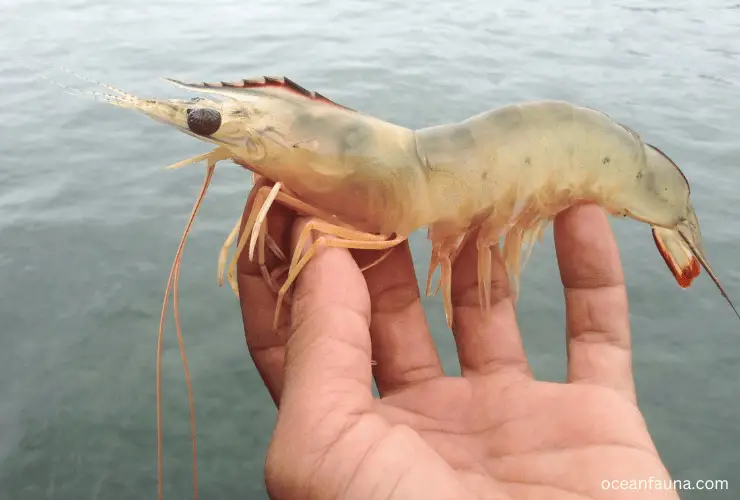
Shrimp are fascinating creatures that undergo a complex life cycle. Understanding the different stages of the shrimp life cycle is essential for shrimp farmers and anyone interested in these fascinating creatures.
Let’s take a closer look at the different stages of the shrimp life cycle.
Eggs
The first stage of the shrimp life cycle is the egg stage. Female Shrimp carry the eggs in a brood pouch until they hatch. The number of eggs that a female shrimp can carry depends on the species. For example, a female tiger shrimp can carry up to 1 million eggs, while a female pink shrimp can carry up to 500,000 eggs. The eggs hatch after about 24-48 hours.
Larvae
After hatching, the shrimp larvae emerge from the brood pouch and become free-swimming. They are extremely small and fragile at this stage, and their survival rate is relatively low. To improve their chances of survival, shrimp farmers must provide optimal conditions, including proper water temperature, pH levels, and food supply.
Nauplii
The larvae then molt and develop into the nauplii stage. At this stage, the shrimp are still very small and cannot swim properly. Instead, they rely on ocean currents to move around. They also feed on the yolk sac that was attached to their bodies during the larvae stage.
Zoea
As the Shrimp grows, they molt again and enter the zoea stage. They develop more defined body parts like eyes, antennae, and walking legs at this stage. They also start to swim more actively and feed on microorganisms in the water.
Mysis
After several more molts, the Shrimp enters the mysis stage. They are larger and more developed at this stage, with more defined swimming and walking legs. They also start to feed on larger organisms, such as small crustaceans and plankton.
Postlarvae
Finally, the Shrimp enters the post larva stage. At this stage, they look like miniature versions of adult Shrimp, with all their body parts fully developed. They can easily swim, walk, and feed on a wide range of food, including algae, plant detritus, and small invertebrates.
Lifespan of Shrimp
First and foremost, it is important to note that most shrimp have relatively short lifespans, typically living for only a few years.
One factor that can affect Shrimp’s lifespan is their environment. Shrimp kept in clean, well-maintained aquariums with the proper water parameters are likely to live longer.
Additionally, Shrimp fed a varied and high-quality diet are more likely to live longer than those not.
Another factor that can affect the lifespan of Shrimp is their genetics. Some species of shrimp have been selectively bred to live longer, while others have not.
Additionally, Shrimp raised in captivity may have shorter lifespans than those raised in the wild.
How Long Do Saltwater Shrimp Live?
Saltwater shrimp are fascinating creatures in various aquatic environments, including oceans, bays, estuaries, and coral reefs. These shrimp are an important part of the marine ecosystem, serving as both predator and prey for a range of other marine creatures.

So, how long do saltwater shrimp live? The lifespan of saltwater shrimp can vary widely depending on the species and the conditions in which they are kept. Some species of shrimp have a relatively short lifespan, while others can live for several years. Their average lifespan is also one to six years, just like freshwater Shrimp!
For example, some species of cleaner Shrimp have a lifespan of around 1-2 years. On the other hand, species of larger Shrimp, such as the spiny tiger shrimp tiger, can live for up to 4 years.
How Long Do Sea/Ocean Shrimp Live?
Sea shrimp, also known as ocean shrimp, can have varying lifespans depending on the species and environmental factors such as temperature, salinity, and food availability.
According to NOAA Fisheries, the Pacific white shrimp has a lifespan of around one to two years, while the tiger shrimp has a lifespan of around two to three years.
On the other hand, the Fan shrimp, which originates from Africa, can grow as large as 5.5 inches and live for up to five years.
Shrimp occur in all oceans and range in size from a few millimeters to more than 20 cm, with an average size of about 4 to 8 cm. Some shrimp live in deep and dark waters, while others prefer to live in shallow areas.
It is important to note that environmental factors such as ocean acidity and pollution can also affect the lifespan of ocean shrimp. However, it is generally understood that the average lifespan of most shrimp species ranges from one to three years.
In summary, the lifespan of ocean shrimp varies depending on the species and environmental factors. While some species can live up to five years, most have a lifespan of around one to three years.
Average Lifespan of Different Shrimp Species
Shrimp is a popular seafood delicacy, and they are also commonly kept as pets in aquariums. Shrimp belong to the class Crustacea and are characterized by their hard exoskeletons and segmented bodies.
While some shrimp species have relatively short lifespans, others can live for several years.
Let’s get to know the average lifespan of different shrimp species.
Tiger Shrimp
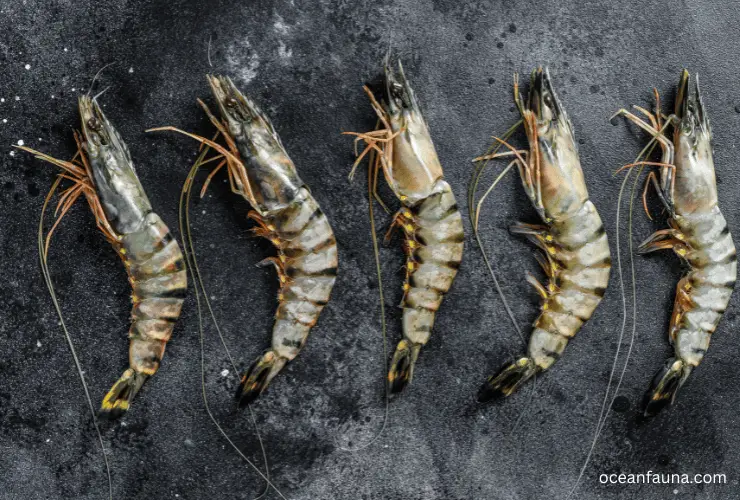
Tiger shrimp, also known as Penaeus monodon, are popular for commercial shrimp farming. These shrimp are usually larger than freshwater aquarium species, with a maximum length of around 12 inches. Tiger shrimp have an average lifespan of around 1 to 3 years. But they can live up to 5 years as well!
Pacific White Shrimp

Pacific white Shrimp, also known as Litopenaeus vannamei, are another popular species for commercial shrimp farming. These shrimp are usually smaller than Tiger shrimp, with a maximum length of around 8 inches. Pacific white Shrimp have an average lifespan of fewer than 2 years.
Brown Shrimp

Brown Shrimp is a species commonly found in the Gulf of Mexico. They have a brownish-gray color and can grow up to 8 inches long. Brown Shrimp typically live for a shorter period of time. And they have a lifespan of fewer than 2 years.
Royal Red Shrimp
Royal Red Shrimp is a deep-water species found in the Gulf of Mexico. They are bright red and can grow up to 12 inches long. These shrimp typically live up to 3 years in the wild.
Pink Shrimp
Pink Shrimp is a small species found in the Pacific Ocean. They have a pinkish color and can grow up to 7 inches long. Pink Shrimp typically have a short lifespan and live for 1 to 2 years in the wild. Due to their short lifespan, they’re referred to as an “annual crop.”
Rock Shrimp
Rock Shrimp is a species commonly found in the western Atlantic Ocean. They have a hard exoskeleton and can grow up to 8 inches long. These shrimp typically live for 20 to 22 months.
Whiteleg Shrimp
Whiteleg Shrimp is a species commonly found in Asia, Australia, and the Americas. They have a pale color and can grow up to 7 inches long. In the wild, they typically live less than 2 years due to their short lifespan.
Northern Shrimp
Northern Shrimp is a species commonly found in the cold waters of the North Atlantic. They have translucent bodies and can grow up to 2 inches long. On average, Northern Shrimp typically live for 2 to 3 years in the wild. However, some individuals can live more than 8 years!
Harlequin Shrimp
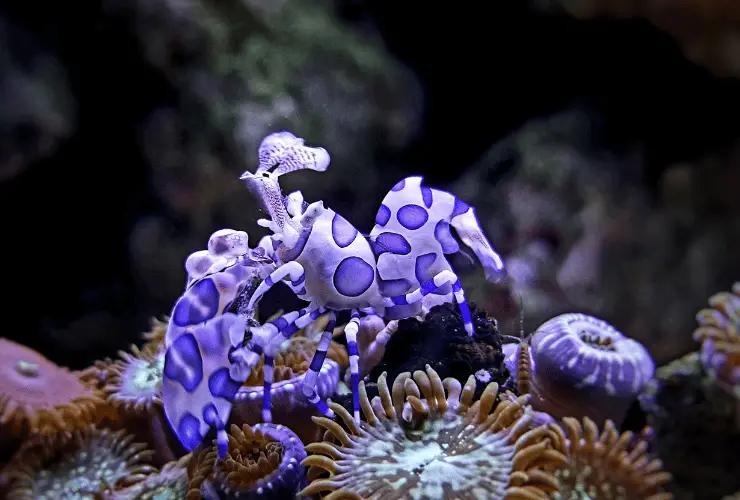
Harlequin Shrimp is a unique species found in the tropical waters of the Indo-Pacific region. They have a vibrant color pattern and can grow up to 2 inches long. One of the most interesting facts about Harlequin Shrimp is that they love to live in pairs. Typically, they have a lifespan of 7 years when they’re undisturbed and are kept to live as a pair of male and female!
It is worth noting that these are just averages, and individual Shrimp may live longer or shorter periods. Additionally, a number of factors can affect the lifespan of individual Shrimp, so it is difficult to predict exactly how long a given shrimp will live.
Factors that Affect the Lifespan of Shrimp
Shrimp are fascinating aquatic creatures that are widely enjoyed as a source of food and kept as pets in home aquariums.
One of the most critical aspects of keeping Shrimp healthy and thriving is understanding the factors that can influence their lifespan.
So here we will explore the various factors that affect the lifespan of Shrimp and how you can optimize their living conditions to help them live longer.
Water Quality
The quality of the water in which Shrimp live is a crucial factor that can significantly impact their lifespan. Sometimes the water quality of the sea or oceans changes or get imbalanced.
As Shrimp are highly sensitive to changes in water parameters such as temperature, pH, ammonia, and nitrate levels, the change in quality can reduce their lifespan.
Diet
Diet plays a vital role in the overall health and lifespan of Shrimp.
Shrimp are opportunistic feeders, consuming almost anything they find in their environment. They don’t focus on the quality of diet in the wild. A well-balanced diet that includes a variety of high-quality foods will provide Shrimp with the necessary nutrients they need to thrive.
Sometimes shrimp don’t get an adequate diet and nutritious food in the wild. So such circumstances can reduce their lifespan.
Predators
Many predators prey on Shrimp, such as fish, crabs, and birds. The predation risk can vary depending on the species and the environment, which can affect their lifespan.
Habitat
Shrimp have specific habitat requirements, such as the presence of rocks, plants, and other structures. The availability of suitable habitats can affect their ability to find food, avoid predators, and reproduce, impacting their lifespan.
Genetics
The genetics of a shrimp species can also play a role in determining its lifespan. Some species are naturally longer-lived than others. Certain genetic factors may make some individuals more resilient to stress and disease.
Reproduction
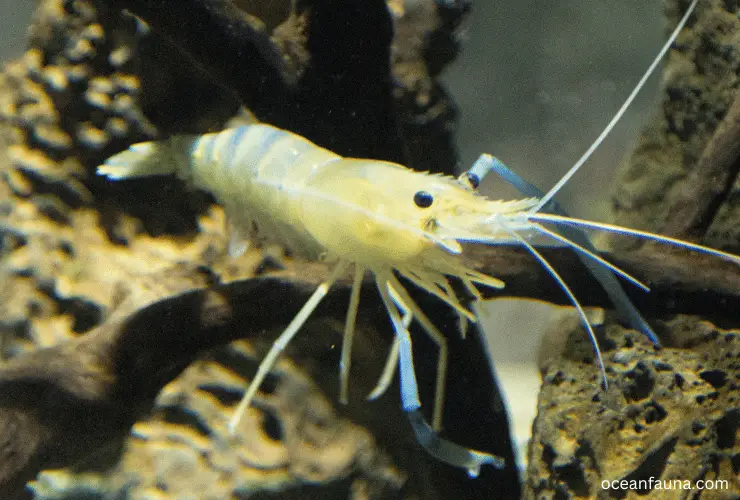
Shrimp reproduction is an energy-intensive process that can take a toll on their health and lifespan. Female Shrimp may produce fewer eggs as they age, and males may have lower sperm quality, leading to reduced reproductive success and lifespan.
Environmental Pollutants and Temperature
Exposure to pollutants such as heavy metals, pesticides, and oil spills can negatively affect Shrimp’s health and reduce their lifespan.
Besides, Shrimp are ectothermic animals, which means their environment regulates their body temperature. Extreme temperatures, such as heat waves or cold snaps, can be stressful for Shrimp and reduce their lifespan.
Disease
Shrimp are susceptible to a range of diseases caused by bacteria, viruses, and parasites. Infections can lead to certain diseases, and this can lead to death.
In conclusion, several factors can affect the lifespan of Shrimp, including water quality, diet, genetics, environment, and disease.
FAQs
Can shrimp live longer in the wild than in captivity?
Ans: It depends on the specific species and the conditions in which they are kept. However, Shrimp may generally live longer in the wild than in captivity.
What is the survival rate of Shrimp from eggs to adulthood?
Ans: The survival rate of Shrimp is neither too high nor too low. Typically, their survival rate is 45%. However, this rate depends on the environment and some other relevant factors they’re living in.
How many babies do Shrimp have?
Ans: Shrimp typically carries between 20 and 30 eggs. However, even if all of the eggs hatch without problem, you will probably only see a handful of babies in the first few days. During their first few months, Shrimp will grow very quickly, meaning they molt much more frequently than they would in adulthood. The number of babies that survive to adulthood depends on various factors, including water temperature and the availability of food,
At what age do Shrimp reach maturity?
Ans: Some shrimp take 2-4 months to become mature, whereas some take between 4 to 6 months. During this time, Shrimp become sexually mature and they’re ready for mating.
Conclusion
In conclusion, the lifespan of Shrimp can vary greatly depending on species, environmental factors, and the care provided. While some species may only live for a few months, others can survive for several years.
The average lifespan of Shrimp depends on several factors, like water quality, environment, genetics, breeding, etc. As they’re all natural factors, humans don’t have any direct impact on these factors.
So that’s all. I believe you now know the lifespan of Shrimp. And now it’s your turn to enlighten others as well. If you’ve got any more queries? Well, feel free to leave them in the comment box below, and we’ll answer them for you. Thank you!

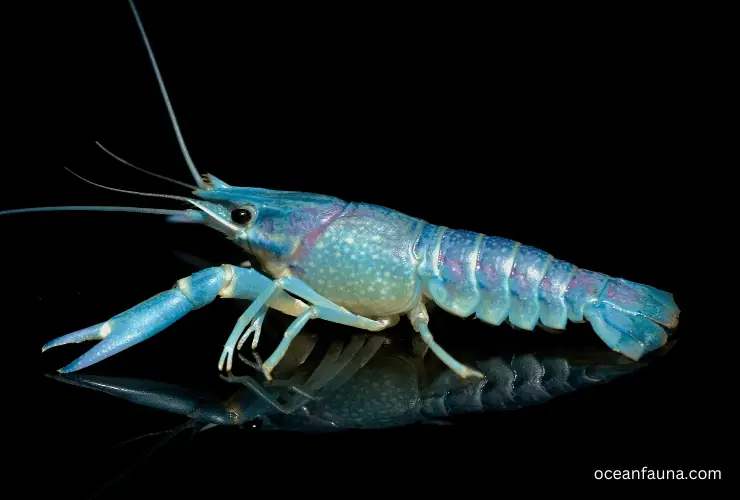
2 thoughts on “How Long do Shrimp Live? [Lifespan of Shrimp]”